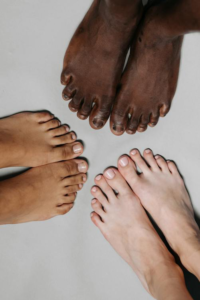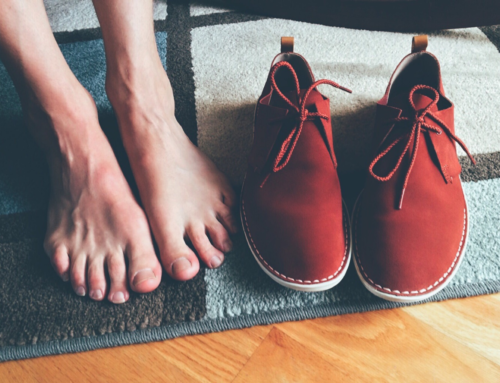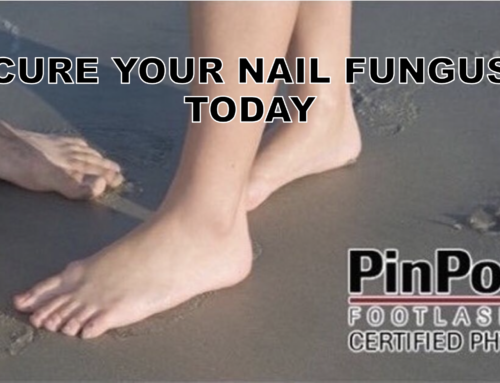Damage from bleaching toenail fungus can be very, very dangerous. Commonly, this damage can manifest as a chemical burn on the skin. Chemical burns can be caused when corrosive, dangerous chemicals come into contact with the surface of the skin. Bleach is a DIY treatment for toenail fungus. Treatments of this nature are typically very ineffective. They don’t utilize properly researched techniques and aren’t done by medical professionals. Most DIY treatments for toenail fungus are going to have minimal effects on the fungal infection. However, some of these treatments are also extremely dangerous and should be avoided. A few internet blogs and articles may recommend trying bleach on the toenail fungus. This is against the majority of podiatrists’ guidance.
Dangers of Bleaching Toenail Fungus
Bleaching toenail fungus is dangerous because of the chemicals in bleach. These chemicals are harsh, abrasive, and corrosive. The label on bleach has very strict warnings, which are there for the reason of protecting you from harm.
When the warning labels aren’t followed on chemicals like bleach, this can cause severe damage and adverse reactions. Because chemicals like bleach are so corrosive, they can eat away at your skin and toes, causing severe chemical burns.
Damage caused by bleach to the skin and nails
Damage from bleaching toenail fungus is caused by the chemical properties of bleach itself. Cleaning products like bleach are very harsh chemicals that have the potential to cause a lot of harm to the human body. They need to be this harsh so that they can properly disintegrate dirt, grime, and bacteria. Cleaning products are effective at doing this because the surfaces they are meant to clean are extremely durable. The human body is not as durable as these surfaces.
One very important part of the human body’s regular function is its pH balance. The pH balance of the skin and the body is essential so that normal processes like protection from infection and other bodily functions remain intact. Bleach has an extremely high pH. This makes it very basic. When it comes into contact with the skin, it will severely disrupt the skin’s pH balance. The skin isn’t able to handle this disruption, and damage following the bleach application can be severe.
Safety issues regarding using bleach on skin and nails
Bleaching your toenails is unsafe because of the properties of chemical bleach. This is a cleaning product that is only meant to be used on surfaces like bathrooms. Importantly, bleach shouldn’t be used anywhere where it could come into contact with the skin. When bleaching clothes, for example, the clothes need to be washed thoroughly to remove the bleach before wearing them. Chemical bleach is an intense, potent chemical that has very strong properties. Bleach can rapidly corrode materials like some plastics and completely remove the dye from clothing. Because you don’t want your skin to corrode or become colorless, using bleach is a bad idea.
Effects of bleach and why Bleaching Your Toes Is Bad
The real effects of bleaching skin are severe. Therefore, Bleaching Your Toes Is Bad. Often, using undiluted or diluted bleach on the skin can cause chemical burns and irritation. Chemical burns can cause symptoms like redness, blistering, peeling, cracking, and more. Often, chemical burns require immediate medical attention. It is best to avoid them as much as possible by avoiding using harsh chemicals on the toe.
If you have tried bleaching your toenails, you should seek professional medical assistance immediately. Wash off the bleach from your toe and assess the damage. If you just have slight irritation of the skin, you can wait to see if it gets worse before seeking medical attention. However, if you notice any more severe symptoms of a chemical burn, you should go to the emergency room or urgent care.
Will Bleach kill fungus?
The other downside of bleaching toenail fungus is that it is actually very ineffective at treating the fungal spores themselves. Toenail fungus lives underneath the nail, inside the nail bed. To be an effective treatment for fungus, it needs to get through the nail into the nail bed. Different methods of toenail fungus treatment do this in different ways. For example, topical medications have chemicals designed to penetrate the nail.
Oral medications avoid going through the nail entirely by traveling through the bloodstream first. However, this requires them to be processed in the liver, which can have harmful side effects. Laser treatments penetrate the nail with heat to kill the fungus. Bleach tries to mimic a topical medication in its delivery method, but is ineffective at getting into the nail bed. Also, despite how harsh the bleaching chemical is, it is not effective at killing fungal spores. Therefore, by applying bleach to the toenail, you are doing a lot of harm, with not a lot of good.
Chemical Burns
By bleaching toenail fungus, you are exposing both the nail and the skin to a harmful chemical. Chemical burns are one of the most likely injuries to result from putting bleach on the skin. Chemical burns are caused by strong chemicals like bleach. They can result in irritation of the skin, along with redness, pain, and burning of the skin. If you have put bleach on your skin, you should rinse it off immediately before a chemical burn forms.
Once you have rinsed off your skin, wash the affected area thoroughly with soap and water. Removing all of the bleach from your skin is essential to prevent any further damage. After washing your skin, examine the damage done to your skin by the bleach.
If your skin is very red or is in pain, it is possible that a chemical burn could have formed from the contact with bleach. Aloe vera or a cloth soaked in cold water can help alleviate pain from the burn, and Neosporin can help the burn heal as well.
Other factors in Chemical Burns
Chemical burns from bleaching toenail fungus may become a more serious problem if you notice other symptoms. Particularly, symptoms of a severe burn include an open wound formation, pulsating heat coming from the burn, red streaks forming in the skin around the burn, and signs of infection, like pus.
If you have noticed these symptoms on your skin after applying bleach, you should be seen by a medical professional as soon as possible. Do not try to treat a burn of this severity at home, as the only people who will be able to treat it safely and effectively are those trained in dealing with urgent medical procedures.
Bleaching toenail fungus also exposes other areas of your body to the harmful effects of bleach. In particular, the fumes from bleach can also be harmful to your body and respiratory system. If you have inhaled any bleach or have been exposed to prolonged exposure to bleach fumes, you should call 911 and go to the emergency room immediately. You should also call 911 and go to the emergency room if you have swallowed bleach for any reason.
Severity of damage
Damage from bleaching toenail fungus can vary in severity depending on the length of the bleach application. Chemical burns will be worse the longer the bleach is in contact with the skin. The less diluted the bleach is, the more severe the burn will be as well. This means that if the bleach is pure, it will cause more damage. Immediately rinse off any bleach that comes into contact with your skin for at least 5 minutes with water.
You should also immediately remove any clothing that could have come in contact with the chemical, since it could have residual chemicals in it that will cause further damage. This rinse should be followed by a very thorough wash with soap and water to ensure that every last bit of bleach has been removed from the surface of the skin. After rinsing and washing off the bleach, dry off the area and take a look at the skin.
Examining the damage
Examining the skin can help to assess the level of damage from bleaching toenail fungus. If your skin is mildly red but you don’t have any other severe burn symptoms like pain, you can wait to see if the skin heals itself or progresses to something more serious. For any reason, if you don’t see quick improvement in the skin’s condition, you should seek medical attention as soon as possible to avoid further complications.
If the burn is a second-degree burn, it will require more serious medical intervention. These burns need immediate medical treatment and can even cause permanent scarring. Third-degree burns go past the skin to burn the tissue underneath. This can even reach the bone in extremely severe cases. They may cause the skin to turn black or white, and can even feel numb because of nerve damage. While it is unlikely that these will result from damage from bleaching toenail fungus, they also need to be treated by a medical professional immediately.
Review your sources
Bleaching toenail fungus away is a prime example of why everything on the internet shouldn’t be trusted. None of the people suggesting this treatment is a licensed professional. In fact, medical professionals strongly advise AGAINST using bleach anywhere on your skin at all. This is because bleach is dangerous and ineffective at treating fungal infections. When finding information about toenail fungus online, make sure you are looking for sources that are trustworthy. Vetting your sources to only include podiatry clinics is the best way to ensure you are getting the correct information about the condition. This can help you avoid making dangerous and unsafe decisions like putting bleach on your toes.
Treatment Options for Toenail Fungus
While bleaching toenail fungus isn’t an effective way to get rid of the infection, there are other safer options available. There are a few treatments available for fungal infections, and some of them are better than others. For example, topical treatments are very weak and require a very long period of application before any results are seen at all.
Oral medications are a little more effective than topicals, but they come with more severe risks. Specifically, oral medications have to pass through the bloodstream and liver before getting to the nail bed and can cause damage and toxicity to the liver itself. These medications require blood screenings before and during their treatment.
Best Treatment options for nail fungus
Our doctors in New York always recommend that you at least come in for a consultation so they can assess the severity of the problem. They can also then discuss all the best treatment options. While a majority of treatments available for toenail fungus lack effectiveness or pose risks of danger, there are some options available that are effective and still safe. gaetzpharmacy.com If you have a toenail fungus, you should be able to receive appropriate, effective, and safe treatment for it. Our nail fungus Laser is an FDA-approved treatment for the fungus that only requires one session to eliminate the fungus. To learn more about the PinPointe laser technology, visit our website here and schedule a free consultation with one of our podiatrists.





